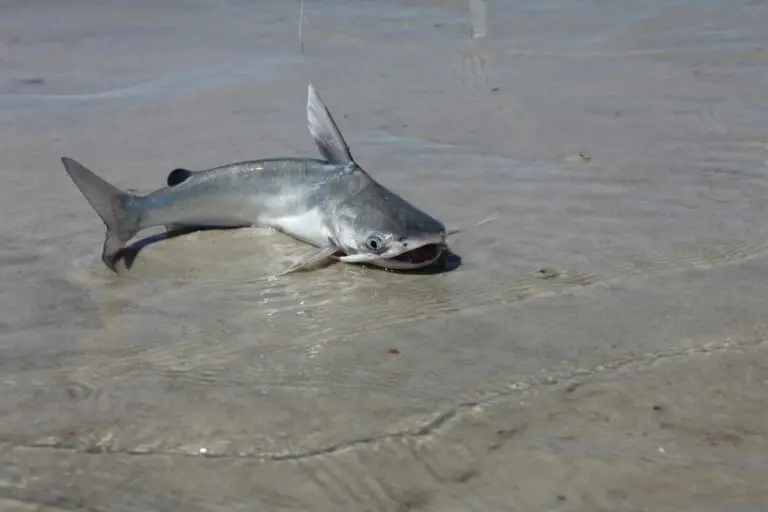Do Catfish Bite When It’s Hot? A Hot Weather Catfishing Guide
Many anglers prefer to fish for catfish during summertime. All you need is to prepare your gear and have a good understanding of their movement patterns and behavior in response to hot temperatures to increase your chances of catching more catfish during the summer.
So, do catfish bite when it’s hot? Yes, catfish do bite when it’s hot. That is because catfish seem to tolerate the hot temperatures well and they will actually become more active in searching for food. They can mostly be found in deeper water during the day but they will move to shallow water in the late afternoon.
Table of Contents
A Hot Weather Catfishing Guide

Best Spots to setup to Catch Catfish in Warm Temperature
Catfish will spend most of the day down in deeper areas of water in lakes or rivers, but by the late afternoon, they will usually move to shallow water
So, the best place to set up to catch catfish in warm weather would be the areas where you can intercept catfish heading to and from shallow water.
In large lakes, you can find catfish near the mouths of creeks dumping into the lake and at the base of “fingers” at a reservoir. While in rivers, you can find them downstream where a small river or creek dumps into the main river. That is because this area will be wider and have less current.
Best Times of the Day to Catch Catfish in the Summer
The best time of day to catch catfish during the summer and in warm weather would be around nighttime since catfish don’t need to rely on their vision to find and catch their food.
Another good time would be during the middle because catfish will be actively hunting their prey so they are more likely to bite.
Best Gear to Catch Catfish in Warm Temperature
Catfish can grow large and might put up a tough fight. You need to make sure you’re not under-equipped so you won’t risk losing your catch.
For fishing rods, it’s recommended to use a surf fishing rod or a heavy baitcasting rod. That is because these rods will give you more flexibility when casting and will allow you to cast your catfish bait further out into the lake or river where bigger catfish tend to hide. The extra size of the rod will also help you when reeling in a large catfish up from deep waters.
When it comes to fishing reels, it’s recommended to use either a surfcasting reel or a heavier bottom fishing reel. Both of these reel options will perform more efficiently with a thick monofilament or a braided fishing line. It’s also recommended to use fishing lines with 20-40 pound tests to be able to withstand the weight of larger catfish.
Best Baits to Catch Catfish in Warm Temperature
Catfish always prefer natural baits so, the best baits to use for catching catfish at warm temperatures are cut baits of shad, bream, and shrimp. You can also use homemade baits such as dough baits, dip baits, and punch baits.
Dough baits are easy to make and they don’t need to sit for a long time before you can use them. Punch baits, on the other hand, need to sit for a longer time to get them to the right consistency. Dip baits are similar to punch baits except they have a thinner inconsistency.
Tips and Tricks to Catch More Catfish
Here are some tips and tricks you can utilize to increase your chances of catching more catfish:
- Locate The Warmest Areas of Water
Locating warmer areas of water will always lead you to the catfish because that’s where they will be actively searching for food.
- Implement the 15-Minute Rule
If you don’t get any bites within the first 15 minutes, try moving to another spot to avoid wasting your time fishing in areas of water that don’t have any catfish.
- Use Fish Finder
A fish finder can be a useful tool when fishing for catfish in hot water. Since catfish will be constantly moving from deep to shallow water throughout the day, a fish finder will help tell you water depth and temperature. It will also show you the drop-offs, and tell you where the catfish are.
- Opt for More Natural Baits
Depending on the body of water and food availability, catfish generally prefer natural baits including shad, bluegill, shiners, or clams.
- Avoid Stink Baits
Stink baits are messy and extremely off-putting to you and everyone around you. They don’t really work well with catfish as they prefer more natural bait that smells healthy.
- Use Multiple Fishing Rods
When fishing for catfish in the summer, it’s recommended to have as many lines in the water as you can because the fish will be more spread out
However, you need to make sure your state doesn’t have limits on the number of fishing rods you can use.
- Fish When the Moonlight Is Minimal
When fishing for catfish at night during summer, it is believed by many anglers that catfish will bite more when the moonlight is minimal than on nights with a full moon.
- Use colorful lures
If you’re fishing at night, the best way to increase visibility and get catfish to bite more is by adding color. Many tackle companies make lures in countless colors and patterns.
It’s recommended to avoid using blue lures because they don’t show well in low light conditions and go for white, yellow, green, red, and orange lures instead because it’s reported by many anglers that these colors work well with catfish.
- Use scent attractants
Catfish will typically rely more on their sense of smell to locate their food at night. So, it’s recommended to add a small number of scent attractants to your lures and baits to help increase your chances of catching more catfish.
Most attractants are made to mimic natural bait scents that are produced by catfish prey such as minnows, crayfish, worms, and frogs. You can check my guide to scented baits here.
- Make Sure to Check the Hook point
It’s important to check your hook point after driving your circle hook through your shad or bluegill to make sure nothing is obstructing it.
You need to make sure the hook point is free and clear from the flesh of the bait you are using. You also need to make sure no scales are covering your hook point as this can prevent a good hook drive.
Outdoorskilled’s Recommended Gear for Superb Catfishing
I’ve testeI’vezens of reels, rods, and lines for Catfishing, and after years of testing, here are my quick picks that will definitely improve your current setup and results!
My recommended reel is the Abu Garcia Ambassadeur Reel C3-7000 which is ideally suited for catfish.

The rod I always recommend is the KastKing Perigee II Fishing Rod. It’s lightIt’sht, durable, and affordable. Furthermore, you’d haveyou’dde selection of models to choose from, whether you’re looyou’reor a spinning or casting rod. Lastly, it comes in twin-tips models, which means you’ll be you’llg two rods rather than one.

What I use is the Berkley Trilene Big Game Monofilament Fishing Line as it’s the sit’sgest, toughest mono I’ve ever I’veed and because it has exceptional shock strength, great knot integrity, tremendous abrasion resistance, and a high-visibility color option, you really can’t findcan’ter options

How to set the Circle Hook?

Circle hooks are ideal for catching catfish because they’re less likely to be swallowed by catfish and you can set them neatly in the corner of their mouth. However, many anglers are not familiar with the proper way to set a circle hook.
In order to handle a catfish biting your circle hook, you need to allow the fish to hook themselves and you need to watch your rod tip for signs of a bite.
When a catfish grabs hold of your bait, your rod tip will bend down and stay there. You need to wait about 3 seconds before quickly turning the reel handle a few times until your rod is completely bowed down. Now, your circle hook will be embedded in the lip of the catfish.
You can learn how to choose the right hook size here (and I also discuss my favorite hooks that are just the best value for the money).
How to Unhook a Catfish?
There are some simple steps you need to follow to safely unhook a catfish without causing harm to the fish or yourself:
After reeling in your catfish, pick it up by gripping behind the three frontal spines that are located on the edges of its dorsal and pectoral fins.
Grab the fishing pliers with your other hand, then use them to grip the eye of the hook.
After you get a good hold on the eye of the hook with your pliers, roll the hook’s eye towards the hook’s point.
As your hook starts to yank the fish’s mouth, twist the hook’s point and pull it out of the catfish’s lip.
You can watch the video below for an illustration of how to handle and unhook catfish safely:
Related Questions
Do Catfish Bite in Cold Temperatures?
Yes, catfish bite in the cold temperature. They will seek refuge in deeper water when the temperature drops during late fall and winter. Although they are more lethargic in colder waters, they will still eat and readily bite the same baits as they did in the warm temperatures.
Do Catfish Prefer Muddy Waters in Hot Temperatures?
Yes, catfish prefer muddy waters in hot temperatures. That is because muddy water stirs up action and brings in more food. Catfish can rely on their sense of smell to find their food in low visibility waters, so they will move into areas where a creek or river inlets pumps muddy water into the reservoir.
Helpful Resources
Fishing for Catfish: The Complete Guide for Catching Big Channells, Blues and Flatheads
Resources for Catching Catfish Faster and More Easily
- Upgrade your gear with the best Catfish Rods here and the best Catfish Reels here
- You should also check out these perfect catfish rod and reel combinations here.
- Take your catfishing skills to the next level by checking this guide to catching Catfish
If you like this article, please share it or pin it, you can find the share buttons below. We will really appreciate it ❤️

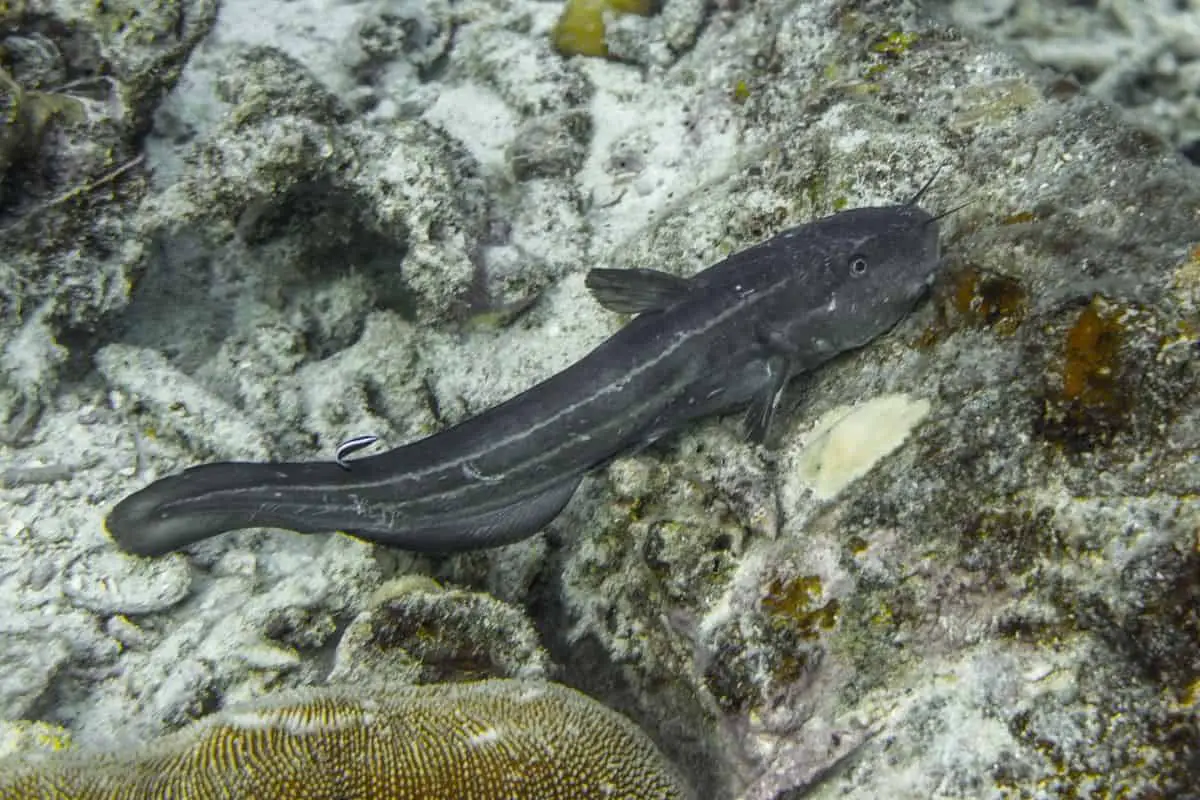
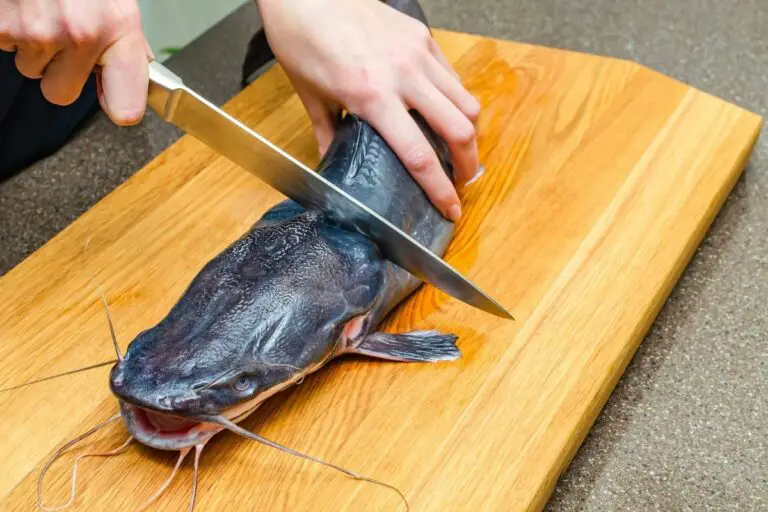
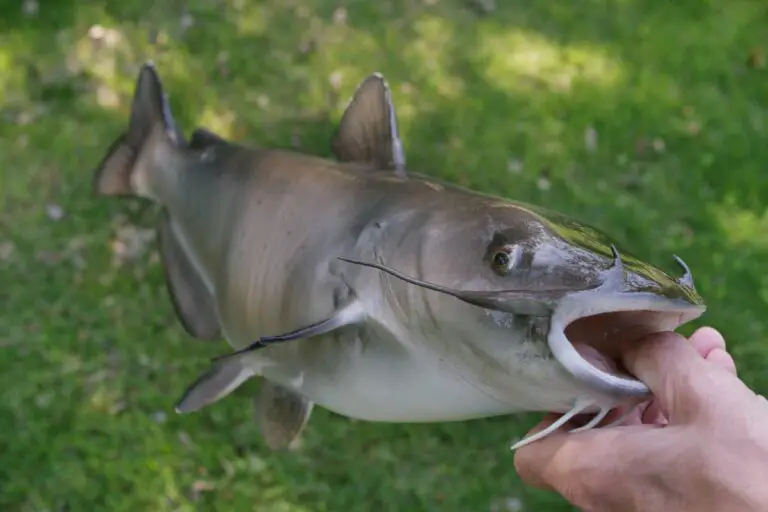
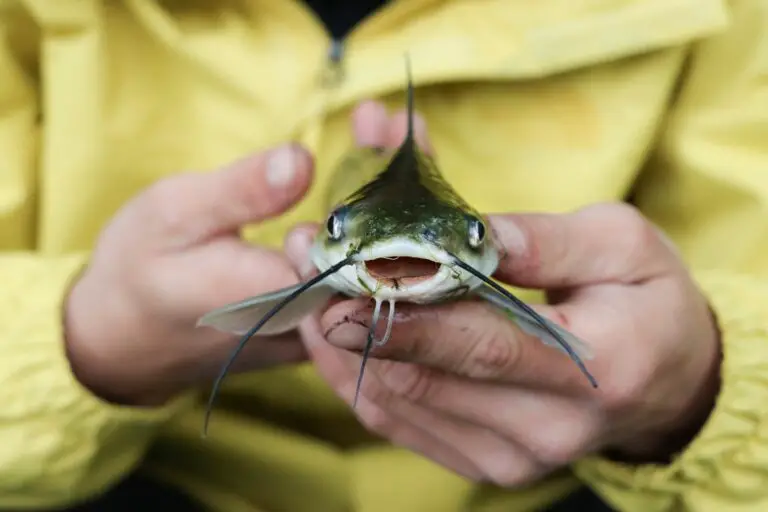

![Do Catfish Like Peanut Butter? [Tested it Myself]](https://outdoorskilled.com/wp-content/uploads/2022/04/Peanut-butter-sandwiches-768x512.jpeg)
